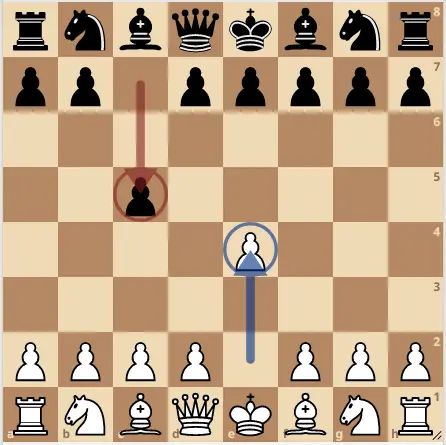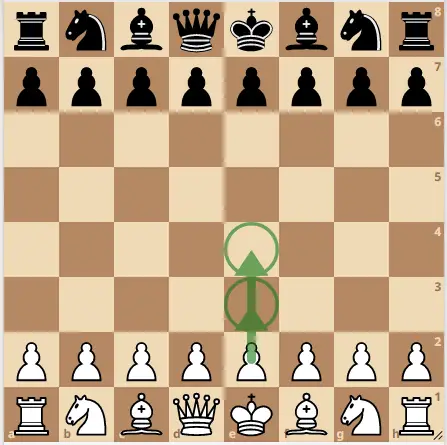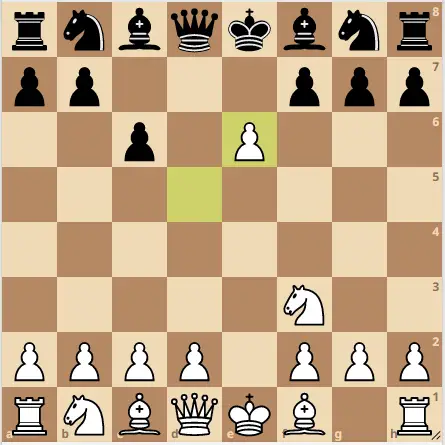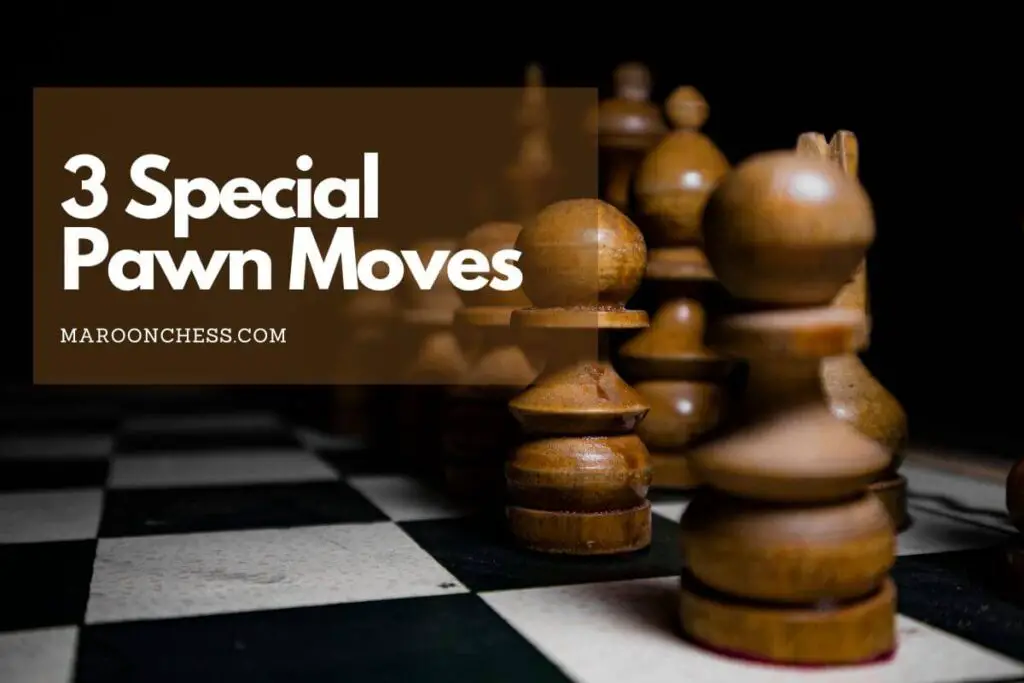The pawns are the soul of the chess game. They help to define the nature and characteristics of the position. They move one square forward and capture diagonally forward to the left or right. But did you know that there are other special moves that the pawn can perform?
Indeed, pawns can perform three special moves that can only be done once in the game. The special pawn moves are en passant, pawn promotion, and the 2 square move (double move).
In this article, we will look at all three special pawn moves in detail, when they can be executed and the benefits of making such moves. With that said, let’s jump right in.
3 Special Pawn Moves In Chess
1. Double Move
The double move also known as the 2 square move is a special pawn move because it can only be made once in the game. As the name suggests, the pawn moves 2 squares forward, but only on its first move from the initial starting position.
The pawn move 2 squares on their first move

Note that you cannot move the pawn 2 squares again after it has been moved.
On the first move, you can move your pawn one square forward or 2 squares forward. If you move your pawn one square forward on the first move, you still cannot move it 2 squares forward on another move. Therefore, you only get to advance your pawns 2 squares forward once on their first move.
Why Does The Double Pawn Move Exist?
The double pawn move exist in order to get things going quickly. At first, the pawn only could move one square forward.
But this was seen as too slow in the opening of the chess game because the pawn would have to move one square forward and then another square forward to reach the central squares of the chess board.
This would waste a lot of time. Therefore, the 2 square move was introduced to speed things up.
White would have to move his e-pawn to e3 and then to e4

Benefits of Advancing Your Pawn 2 Squares Forward
The advantage of this special move is to quickly open lines for your pieces in the opening phase of the game. The double move also grabs space in the center and helps to control key central squares.
Besides the center, you can advance your flank pawns 2 squares forward to also grab space, and to quickly launch an attack on the queenside or kingside.
2. En Passant
Many beginners players are startled when they first encounter this special move. It doesn’t occur too often in your games, but nonetheless, you will have to know this move if you want to know all the rules of chess.
En passant grants you the ability to capture an opponent’s pawn if it advances two squares forward from its starting position and lands next to your pawn.
When this happens, you can capture the pawn by moving your pawn diagonally to the square that the enemy pawn passed over as if the enemy pawn had advanced only one square.
For example, in the position below, black just advanced his e-pawn 2 squares forward to e5 next to the white pawn.

White can perform en passant by capturing the e5 pawn diagonally forward even though the black pawn is not on e6.
After en passant

Note that en passant can only be done immediately after your opponent advances his pawn 2 squares forward next to your pawn. You will not be able to capture the pawn on the next turn.
Why En Passant Exist?
En passant which means “in passing” was introduced to the game in 1561 and was officially accepted in the rule book in 1880. There are actually several reasons why en passant was added to the game.
One of the main reasons was to prevent players from closing up the position with their pawns. This would likely result in draws as there are no progress to be made when the position is locked up.
A second reason why en passant exist is to prevent the enemy pawn from evading capture whenever it moves 2 squares forward from its initial position.
This would seem unfair if you could simply use the double-move to dodge the danger. This explains why it was necessary to include the rule.
3. Pawn Promotion
Pawn promotion is the most powerful special move out of all the 3. It allows you to promote your pawn into a queen, rook, knight or bishop once it journeys to the other side of the board. (Specifically the 8th rank for white, or the 1st rank for black)
In the following position, the white pawn is one square away from promoting into a queen. Similarly, the black pawn on e2 is also one square away from promoting.

Most players promote their pawn into a queen rather than a knight, bishop, or rook as the queen is the most powerful piece on the board. The player who promotes their pawn into a queen usually stands a greater chance of winning the game as the force of the army increases with an extra queen.
Important Rules To Know When Promoting
When playing online chess, the pawn gets promoted after you click and move the pawn to the back rank. Here the computer gives you 4 options to choose from: knight, bishop, queen, or rook.
It’s up to you to choose which piece you want to promote your pawn to. In some rare cases, it’s best not to promote your pawn into a queen if stalemate lurks in the position.
For example, in the position below, white would stalemate the game if he should ever promote his pawn into a queen. Instead, white should promote the pawn into a knight which conveniently delivers checkmate to the black king.

When playing over the board chess, the rules state that you should advance the pawn to the queening square (the square where the pawn promotes) before you exchange the pawn for a queen. This means you cannot introduce a new queen on the board until you actually move the pawn to the 8th rank. Then after, you can exchange it for a queen, rook, bishop, or knight.
Failure to promote the pawn correctly is seen as an illegal move. The position should be reinstated before the irregularity and the player should correctly promote the pawn according to the FIDE rules.
Final Verdict
There you have it, the 3 special pawn moves that every player should know. Though pawns are only worth 1 point, they are still a force to be reckoned with due to the special moves that they can perform. A pawn can go from the weakest piece on the board to the strongest piece just by promoting into a queen.
The other two special moves are just as effective. En passant prevents the position from locking up, and the double move helps to speed up things early in the opening. Without these special pawn moves, chess would not be the beautiful and marvelous game as we know it.


